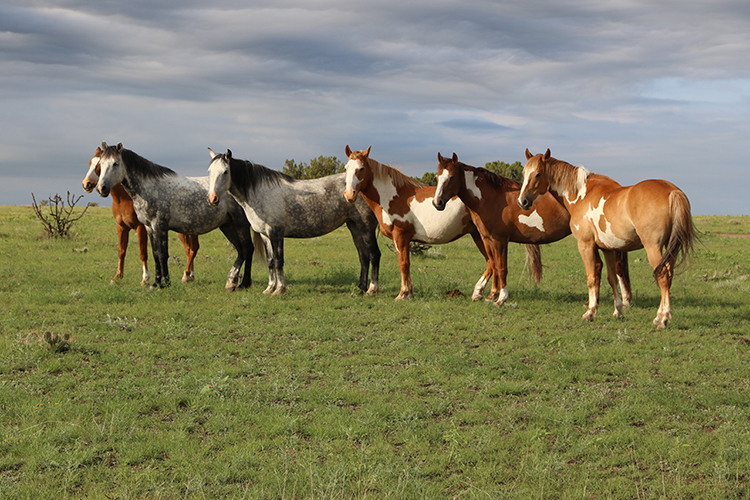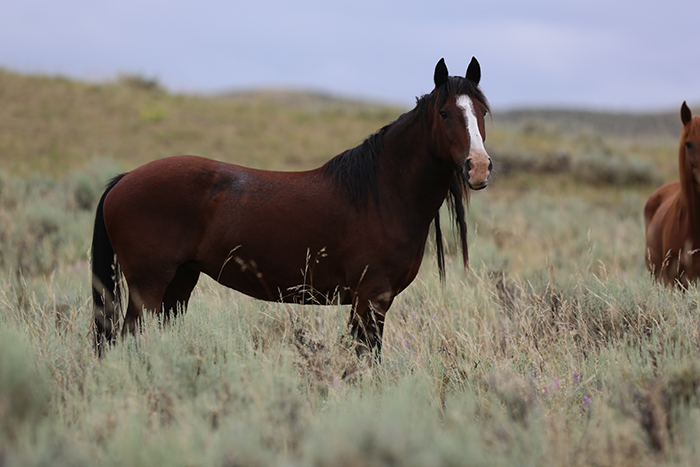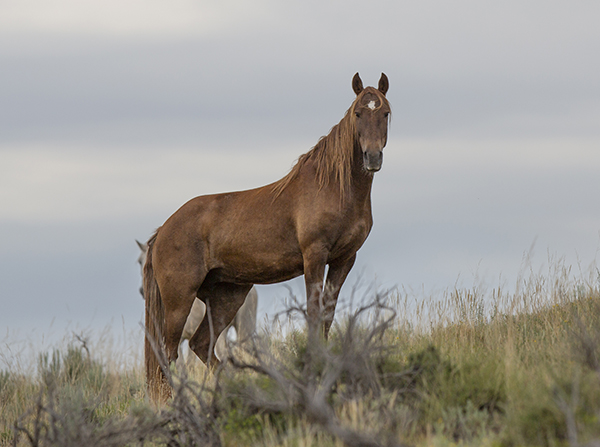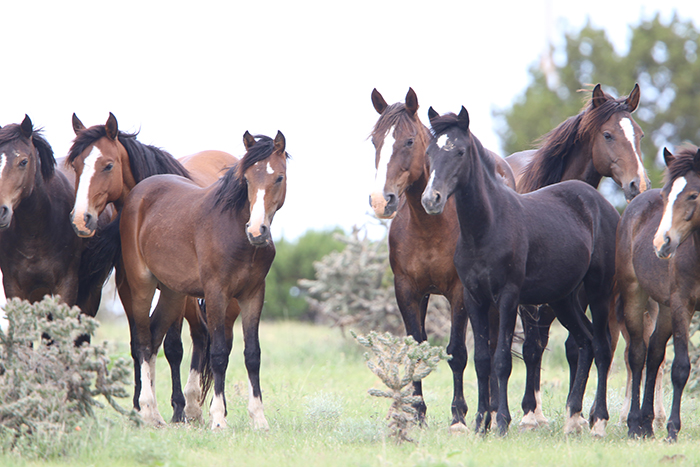By Paula M. Bodah
Photography Courtesy of Wild Horse Refuge
Colorado’s new WILD HORSE REFUGE protects both the magnificent mustang and a rich piece of Western culture

Once upon a time, the U.S. was home to vast herds of free-roaming wild horses. “They were all over the country 150 years ago,” says Patrick Craig, executive director of the Wild Animal Sanctuary, just northeast of Denver. Some estimates put the number of wild horses nationwide at around 2 million in 1900.
Craig, who started his sanctuary 43 years ago to save surplus zoo creatures and wild animals people acquired then realized they couldn’t care for, also spearheaded the founding of the new Wild Horse Refuge, a 22,500-acre parcel in northwestern Colorado. Opened in spring 2023, the new haven will become home to as many as 500 mustangs, most of which will be relocated from nearby public lands such as the Sand Wash Basin Herd Management Area.


The history of our country’s wild horses is rich and proud. The Spanish likely brought the domesticated forebears of those wild equines to North America in the 1500s. Indigenous people, who recognized their usefulness, helped spread the equine population across the continent. From those groups of domesticated horses, some would break free and form the feral herds that we’ve come to call mustangs. “Mustang isn’t a specific breed,” Craig explains. “It’s another term for wild horse.”

Those horses thrived in the vast, unsettled stretches of the American West, but as the country’s development progressed, conflict began to grow between cattle ranchers and the roaming equines.
In the middle of the 20th century, the newly formed Bureau of Land Management (BLM) started leasing land for grazing cattle. “Back when there weren’t so many people, it wasn’t a big deal,” Craig says, “but eventually, the horses got pushed into tighter and tighter areas.”
Over time, the wild horse population faced increasing pressures, from food scarcity to being rounded up and sent to slaughter. A form of rescue arrived in 1971 with the enactment of the Wild Free-Roaming Horses and Burros Act, protecting the animals that lived on federal land. Horse Management Areas were established across the U.S., and the BLM, which manages them, tried to control and stabilize the wild horse population by rounding them up and offering them for adoption. However, the number of horses far exceeds the adoption rate, resulting in a constant struggle to find suitable homes for the magnificent creatures.

In 2021, to address the growing number of horses in the northwestern part of the state, Colorado Governor Jared Polis sought help from various organizations, including the Wild Animal Sanctuary. It had already opened a 10,000-acre refuge for wild horses in southeast Colorado in 2018. Now, Craig began the process of raising money for this new, larger refuge to the north. “We started a founder program for people to donate, and thousands of people paid to make it happen,” he says.
The new refuge offers plenty of space for the horses to roam and form their unique family bands. While the sanctuary’s caretakers regularly observe them to ensure their safety, they strive to minimize intervention. No one trucks in hay or water or calls a veterinarian to attend to a sick horse. “They’re wild, and they survive one hundred percent on their own,” Craig says.
The horses come in a variety of breeds and colors. Some still exhibit the original Spanish horse traits, with distinct colors and markings, while others have characteristics from farm-bred draft horses. The diversity and beauty of these wild animals capture the essence of their heritage and the history they carry.
Beyond preserving the wild horses, the sanctuary represents a living heritage of the nation’s past. Protecting these beautiful beasts also means safeguarding a connection to our history and promising to cherish and protect our natural world for generations to come.

The Wild Horse Sanctuary is open to the public by appointment.
Visit wildhorserefuge.org for details.


